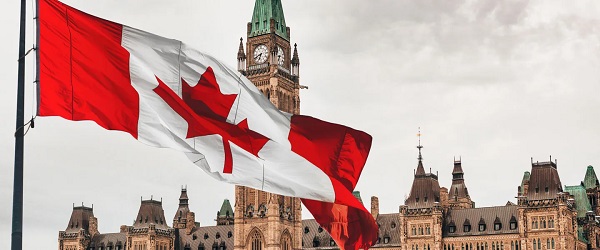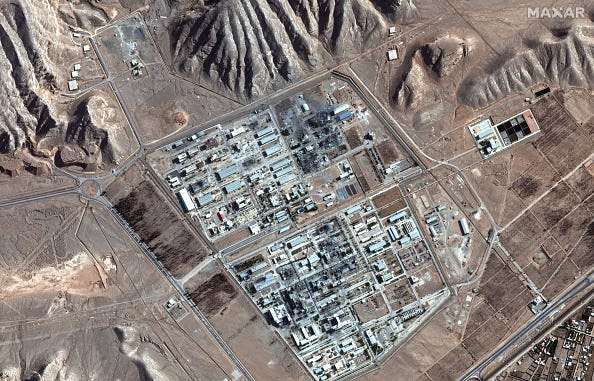Fraser Institute
Australia’s universal health-care system outperforms Canada on key measures including wait times, costs less and includes large role for private hospitals

The Role of Private Hospitals in Australia’s Universal Health Care System
From the Fraser Institute
by Mackenzie Moir and Bacchus Barua
In the wake of the COVID-19 pandemic, provincial governments across Canada relied on private
clinics in order to deliver a limited number of publicly funded surgeries in a bid to clear unprecedented
surgical backlogs. Subsequently, surveys indicated that 78% of Canadians support allowing more
surgeries and tests performed in private clinics while 40% only support this policy to clear the
surgical backlog. While a majority of Canadians are either supportive (or at the very least curious)
about these arrangements, the use of private clinics continues to be controversial and raise questions
around their compatibility with the provision of universal care.
The reality is that private hospitals play a key role in delivering care to patients in other countries with universal health care. Canada is only one of 30 high-income countries with universal care and many of these countries involve the private-sector in their health-care systems to a wide extent while performing better than Canada.
Australia is one of these countries and routinely outperforms Canada on key indicators of health-care performance while spending at a similar or lower level. Like Canada, Australia ranked
in the top ten for health-care spending (as a percentage of GDP and per capita) in 2020. However, after adjusting for the age of the population, it outperforms Canada on 33 (of 36) measures of performance.
Importantly, Australia outperformed Canada on a number of key measures such as the availability of physicians, nurses, hospital beds, CT scanners, and MRI machines. Australia also outperformed
Canada on every indicator of timely access to care, including ease of access to after-hours care, same-day primary care appointments, and, crucially, timely access to elective surgical care and specialist appointments.
Australia’s universal system is also characterized by a deep integration between the public and private sectors in the financing and delivery of care. Universal health-insurance coverage is provided through its public system known as Medicare. However, Australia also has a large private health-care sector that also finances and delivers medical services. Around half of the Australian population (55.2% in 2021/22) benefit from private health-insurance coverage provided by 33 registered not-for-profit and for-profit private insurance companies.
Private hospitals (for profit and not for profit) made up nearly half (48.5%) of all Australian hospitals in 2016 and contain a third of all care beds. These hospitals are a major partner in the delivery of care in Australia. For example, in 2021/22 41% of all recorded episodes of hospital care occurred in private hospitals. While delivering a small minority of emergency care (8.2%), private hospitals delivered the majority of recorded elective care (58.6%) and 70.3% of elective admissions involving surgery.
Private hospitals primarily deliver care to fully funded public patients in two ways. The first is contracted
care, either through ad hoc inter-hospital contracts or formal programs. Fully publicly funded episodes of care occurring in private hospitals made up 6.4% of all care in private hospitals, while representing 2.6% of all recorded care. The second way is privately delivered care paid for through the Department of Veterans’ Affairs. A full 73.5% of care paid for by the Department of Veterans’ Affairs occurred in private hospitals.
It would be easy, however, to underestimate the significance of this public-private partnership by examining only the delivery of care that is fully publicly funded. Privately insured care is also partially subsidized by the government, at a rate of 75% of the public fee. Therefore, in order to understand the full extent of publicly funded or subsidized care in private hospitals, it is helpful to examine private hospital expenditures by the source of funds. In 2019/20, 32.8% of private hospital expenditures came from government sources, 18.2% of which came from private health-insurance rebates. This means that a full
third of private hospital expenditure comes from a range of public sources, including the federal government.
Overall, private hospitals are important partners in the delivery of care within the Australian universal healthcare system. The Australian system outranks Canada’s on a range of performance indicators, while spending less as a percentage of GDP. Further, the integration of private hospitals into the delivery of care, including public care, occurs while maintaining universal access for residents.
Authors:
More from this study
Business
Carney government should recognize that private sector drives Canada’s economy

From the Fraser Institute
An important lesson of the Justin Trudeau era is that economic prosperity cannot be built on the back of an expanding government sector, higher deficits and ever-greater political tinkering with the economy. It’s time for something different.
At the half-way point of what’s shaping up to be a turbulent 2025, how is Canada’s economy faring?
By any measure, the past six months have been a bumpy ride. The Canadian economy lost momentum over much of last year, with economic growth cooling, job creation slowing, and the unemployment rate creeping higher. Then as 2025 began came the shock of Donald Trump’s tariffs and—more recently—the outbreak of increased military conflict in the Middle East.
Amid these developments, indices of global policy and business uncertainty have risen sharply. This creates a difficult backdrop for Canadian businesses and for the re-elected Liberal government led by Prime Minister Carney.
Economic growth in the first quarter of 2025 received a temporary boost from surging cross-border trade as companies in both Canada and the United States sought to “front-run” the risk of tariffs by increasing purchases of manufactured and semi-finished goods and building up inventories. But trade flows are now diminishing as higher U.S. and Canadian tariffs come into effect in some sectors and are threatened in others. Meanwhile, consumer confidence has plunged, household spending has softened, housing markets across most of Canada are in a funk, and companies are pausing investments until there’s greater clarity on the future of the Canada-U.S. trade relationship.
Some forecasters believe a recession will unfold over the second and third quarters of 2025, as the Canadian economy absorbs a mix of internal and external blows, before rebounding modestly in 2026. For this year, average economic growth (after inflation) is unlikely to exceed 1 per cent, down from 1.6 per cent in 2024. The unemployment rate is expected to tick higher over the next 12-18 months. Housing starts are on track to drop, notwithstanding a rhetorical political commitment to boost housing supply in Ottawa and several provincial capitals. And business investment is poised to decline further or—at best—remain flat, continuing the pattern seen throughout the Trudeau era. Even this underwhelming forecast is premised on the assumption that ongoing trade tensions with the U.S. don’t spiral out of control.
How should Canadian policymakers respond to this unsettled economic picture? We do not face a hit to the economy remotely equivalent to that generated by the COVID pandemic in 2020-21, so there’s no argument for additional deficit-financed spending by governments—particularly when public debt already has been on a tear.
For the Carney government, the top priority must be to lessen uncertainty around Canada-U.S. trade and mitigate the threat of sweeping tariffs as quickly as possible. Until this is accomplished, the economic outlook will remain dire.
A second priority is to improve the “hosting conditions” for business growth in Canada after almost a decade of stagnant living standards and chronically weak private-sector investment. This will require significant reforms to current taxation, regulatory and project assessment policies aimed at making Canada a more attractive location for companies, investors and entrepreneurs.
An important lesson of the Justin Trudeau era is that economic prosperity cannot be built on the back of an expanding government sector, higher deficits and ever-greater political tinkering with the economy. It’s time for something different.
Policymakers must recognize that Canada is a largely market-based economy where the private sector rather than government is responsible for the bulk of production, employment, investment, innovation and exports. This insight should inform the design and delivery of economic policymaking going forward.
Automotive
Federal government should swiftly axe foolish EV mandate

From the Fraser Institute
Two recent events exemplify the fundamental irrationality that is Canada’s electric vehicle (EV) policy.
First, the Carney government re-committed to Justin Trudeau’s EV transition mandate that by 2035 all (that’s 100 per cent) of new car sales in Canada consist of “zero emission vehicles” including battery EVs, plug-in hybrid EVs and fuel-cell powered vehicles (which are virtually non-existent in today’s market). This policy has been a foolish idea since inception. The mass of car-buyers in Canada showed little desire to buy them in 2022, when the government announced the plan, and they still don’t want them.
Second, President Trump’s “Big Beautiful” budget bill has slashed taxpayer subsidies for buying new and used EVs, ended federal support for EV charging stations, and limited the ability of states to use fuel standards to force EVs onto the sales lot. Of course, Canada should not craft policy to simply match U.S. policy, but in light of policy changes south of the border Canadian policymakers would be wise to give their own EV policies a rethink.
And in this case, a rethink—that is, scrapping Ottawa’s mandate—would only benefit most Canadians. Indeed, most Canadians disapprove of the mandate; most do not want to buy EVs; most can’t afford to buy EVs (which are more expensive than traditional internal combustion vehicles and more expensive to insure and repair); and if they do manage to swing the cost of an EV, most will likely find it difficult to find public charging stations.
Also, consider this. Globally, the mining sector likely lacks the ability to keep up with the supply of metals needed to produce EVs and satisfy government mandates like we have in Canada, potentially further driving up production costs and ultimately sticker prices.
Finally, if you’re worried about losing the climate and environmental benefits of an EV transition, you should, well, not worry that much. The benefits of vehicle electrification for climate/environmental risk reduction have been oversold. In some circumstances EVs can help reduce GHG emissions—in others, they can make them worse. It depends on the fuel used to generate electricity used to charge them. And EVs have environmental negatives of their own—their fancy tires cause a lot of fine particulate pollution, one of the more harmful types of air pollution that can affect our health. And when they burst into flames (which they do with disturbing regularity) they spew toxic metals and plastics into the air with abandon.
So, to sum up in point form. Prime Minister Carney’s government has re-upped its commitment to the Trudeau-era 2035 EV mandate even while Canadians have shown for years that most don’t want to buy them. EVs don’t provide meaningful environmental benefits. They represent the worst of public policy (picking winning or losing technologies in mass markets). They are unjust (tax-robbing people who can’t afford them to subsidize those who can). And taxpayer-funded “investments” in EVs and EV-battery technology will likely be wasted in light of the diminishing U.S. market for Canadian EV tech.
If ever there was a policy so justifiably axed on its failed merits, it’s Ottawa’s EV mandate. Hopefully, the pragmatists we’ve heard much about since Carney’s election victory will acknowledge EV reality.
-

 Business2 days ago
Business2 days agoWEF-linked Linda Yaccarino to step down as CEO of X
-

 Automotive2 days ago
Automotive2 days agoAmerica’s EV Industry Must Now Compete On A Level Playing Field
-

 Business2 days ago
Business2 days ago‘Experts’ Warned Free Markets Would Ruin Argentina — Looks Like They Were Dead Wrong
-

 International2 days ago
International2 days agoSecret Service suspends six agents nearly a year after Trump assassination attempt
-

 Alberta1 day ago
Alberta1 day agoAlberta school boards required to meet new standards for school library materials with regard to sexual content
-

 Environment21 hours ago
Environment21 hours agoEPA releases report on chemtrails, climate manipulation
-

 Business1 day ago
Business1 day agoCarney government should recognize that private sector drives Canada’s economy
-

 Bruce Dowbiggin1 day ago
Bruce Dowbiggin1 day agoThe Covid 19 Disaster: When Do We Get The Apologies?









